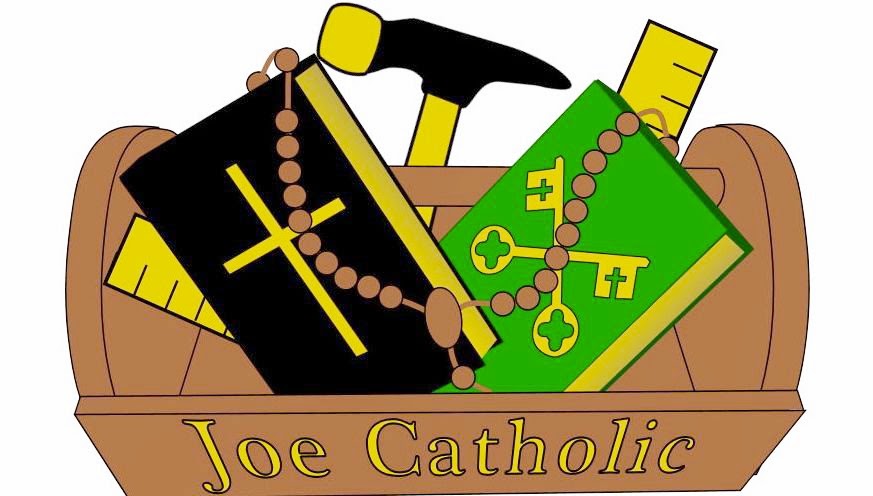If you will notice from the image above, the Joe Catholic logo includes a representation of the Catechism of the Catholic Church - the green book with the keys. We included this to symbolize that we are men faithful to the Magisterium of the Catholic Church. Yesterday morning, the men of Joe Catholic packed into a classroom to gather to break open the Catechism. Why? Because many of us had never even opened a Catechism let alone own one AND, more importantly, because our Holy Father instructed us to read the Catechism.
Year of Faith
When
Pope Benedict announced that the Church would be celebrating a
Year of Faith, he suggested we read the documents of the Second Vatican Council and that we read the
Catechism of the Catholic Church (CCC). This makes sense because this year is the 50th anniversary of Vatican II and it is also the 20th anniversary of the promulgation of the Catechism.
Norm for Teaching the Faith
The CCC is only the second universal catechism handed down by the Church. The
Catechism of Trent is the other and it was written in 1566 primarily for priests. The CCC is one of the fruits of Vatican II and it is intended as resource for ALL members of the Church. Blessed John Paul II called the CCC "a sure norm for teaching the faith" and he asserted that it would help "serve the renewal" of the Church. He continued in
Fidei Depositum (Deposit of Faith), explaining that the CCC "is a statement of the Church's faith and of Catholic doctrine, attested to or illumined by Sacred Scripture, Apostolic Tradition and the Church's Magisterium."
Important Functions
According to the
USCCB, the CCC serves several important functions. They include:
- Conveying the complete, essential and fundamental content of Catholic faith and morals in a summative way.
- It acts as a point of reference for the development of national and diocesan catechisms like the "burgundy" one developed by the USCCB.
- It is a positive, objective and declarative exposition of Catholic doctrine.
- It aids those who have a duty to catechize, namely promoters and teachers of catechesis. I contend this includes parents, who are the primary instructors of the faith to their children.
Four Pillars of the Faith
Pope John Paul II called the Four Pillars of Faith the "four movements of a great symphony." They include:
- Profession of Faith (The Apostle's & Nicene Creeds) - what the Church believes
- Celebration of the Christian Mystery (The Sacraments & Liturgy) - what the Church celebrates
- Life in Christ (Commandments and Beatitudes) - what the Church lives
- Universal Call to Prayer (Our Father) - what the Church prays
CCC's Organization
The Catechism is made up of 2,865 paragraphs. This is how we find things in the CCC - we look up the paragraph number that has been referenced. I liked the way the
New Evangelizers referred to the CCC as being written like an encyclopedia, dictionary and history book all in one. In the back of the "big green" version of the CCC are a number of cross reference tools for scripture, papal documents and documents of the councils. It is written in easy to understand prose and calls upon Sacred Scripture and the writings of the Church fathers, the saints and the Magisterium.
How to Use the CCC
When you first look at the CCC, it can look a bit intimidating because it is as thick as many phone books (do people still use those or are they just thrown in the recycling bin?). While one can certainly read it from cover to cover as FlockNote has attempted through daily emails, it is not necessary nor intended to be read that way. Instead, it is meant to be used as a reference for studying or growing deeper in the faith. Have a question about faith and morals? Pop open the Catechism.
Tips to Get Started
I recommend two ways to get started reading and utilizing the Catechism of the Catholic Church. First, I recommend sitting down with the family and just looking up answers to common questions you or your children may have. Make it fun. Let the kids ask the questions to see what you can find. Remember to be patient because so many of us have become spoiled by the likes of Google searches. You might actually have to narrow down or even change the key words or terms you are using to look up in the INDEX. For example, yesterday we were looking up cloning. There is no reference to cloning in the index, but there is one for LIFE and a subcategory for "snares of human life." That's where we found our answer.
During Lent we are urged to pray, fast and give alms. The Catechism is a great source for learning more about improving your prayer life. As we continue the period of Lent, we could read portions of the Catechism devoted to Prayer.
Plenary Indulgence
If you didn't have enough reason to open the CCC. Here's one more. The Church has attached a
plenary indulgence to the study of the Catechism. Joe Catholic intends to sponsor two more talks on the CCC in the coming months. Here are the requirements (remember that the
other requirements of a plenary indulgence are required too):
(A) Each time they attend at least three sermons during the Holy Missions, or at least three lessons on the Acts of the Council or the articles of the Catechism of the Catholic Church, in church or any other suitable location. (USCCB)



.gif)



























